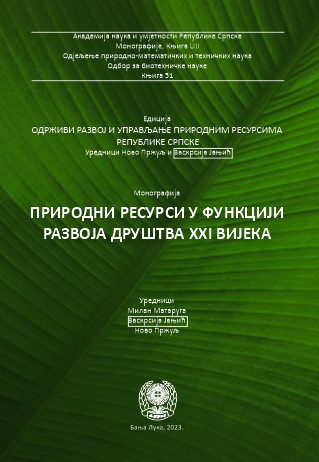Possibilities for the nanotechnology sector development on the bases of primary and secondary resources in the Republic of Srpska
DOI:
https://doi.org/10.7251/EORU2307543SKeywords:
raw materials, nanomaterials, nanotechnologies, mining, tailings, cellulose waste, waste management, circular economyAbstract
Republic of Srpska has significant unexploited sources of raw materials for the production of already widely known applicable nanomaterials, however, this potential has yet to be recognized. The potential of exploitation of several such raw materials is analyzed, as well as their availability in the field. The greatest potential lies in the mining industry waste and waste containing cellulose (sawdust, wood waste, fruit baskets, corn waste, etc.). Metal mines, both active and abandoned, are characterized by large amounts of accumulated sludge from which it is possible to extract metal ions. Later, these extracted ions can be used to produce metal nanoparticles that could have many applications. Utilizing standard processes, it is possible to produce activated nanoporous carbon from cellulose waste, known mostly as a material for filtration of contaminated water and air. From the available data on these resources, published by national and international organizations, this chapter strongly suggests that significant potential for industrial development in Republic of Srpska lies in the production of high-quality nanomaterials from waste materials. In addition to solving a number of environmental problems by reducing waste, the production of nanomaterials from domestic raw materials such as mining waste and cellulose waste materials, which are mostly discussed here, provides opportunities to stimulate local economic development. These industries could lead to the creation of new jobs, increase the efficiency in the use of raw materials by expanding the number of final products that could be produced in the Republic of Srpska with added value, much higher than the raw materials themselves.
